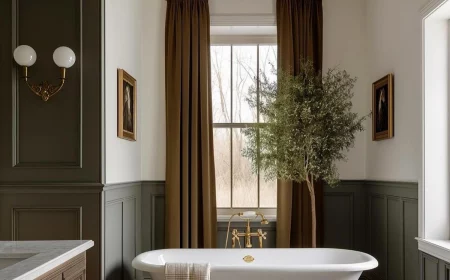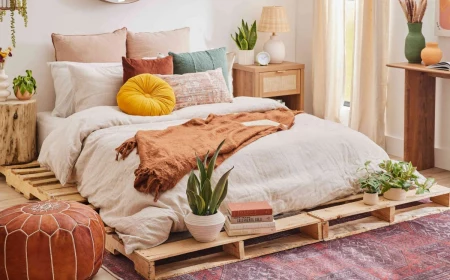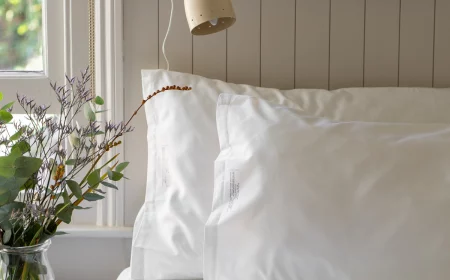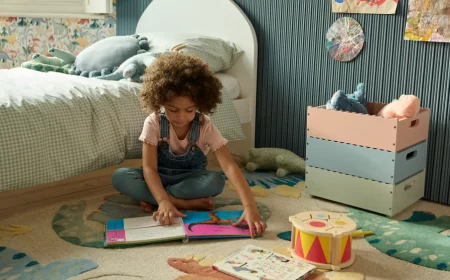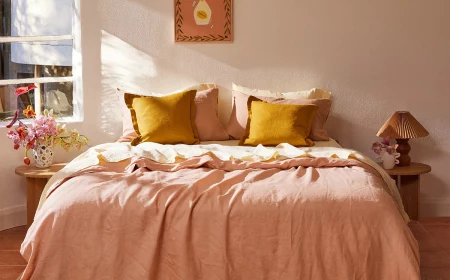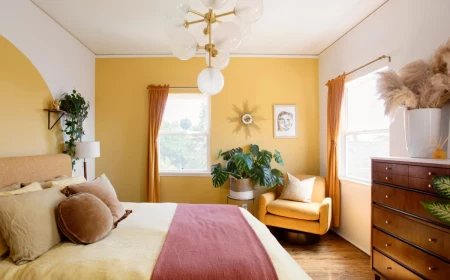The Small Bedroom Makeover Your Teen Will Actually Love
Let’s be honest, designing a teenager’s bedroom can feel like walking a tightrope. As a parent, you see a cramped 10×10 foot box that needs to be functional. Your teen, on the other hand, sees a canvas for their entire world—a place for privacy, creativity, and chilling out. The real trick is bridging that gap, and it’s about way more than just picking out some ‘cute’ decor.
In this article
Forget the fluffy design articles for a second. A truly great small room is built on a solid plan. It’s about thinking like a pro, and that means starting with function first. We’re going to walk through the exact process the experts use, covering everything from layout and lighting to the super-important safety checks every parent needs to know. This is the stuff that makes a room not just look good, but feel good.
First, Forge an Alliance (Seriously)
Before you even think about a paint chip, you need to get on the same page. This project is a collaboration, not a top-down directive. The best way to avoid battles later is to bring your teen into the process from the very beginning.
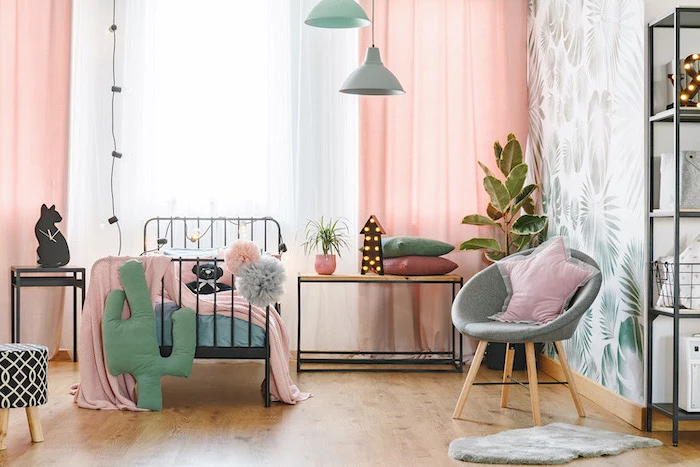
A great starting point? Create a shared Pinterest board. It’s a low-pressure way for them to show you what they love, and for you to understand their vision. Talk about how the room needs to work. Agree on the essential “zones”—one for sleep, one for study, one for relaxing. By giving them ownership over the creative parts, like the bedding, art, and accent colors, they’ll feel more invested in the functional parts you care about, like storage and a proper desk setup.
The Boring (But Crucial) First Steps
I know, I know. You want to get to the fun stuff. But skipping this part is the #1 reason room makeovers fail. Professionals don’t guess, they measure. Every single time.
Get Intimate with Your Tape Measure
Guessing dimensions is a recipe for disaster. You’ll end up with a desk that blocks the closet or a bed that leaves no room to walk. Grab a tape measure and sketch a quick, not-to-scale map of the room. Be sure to note:
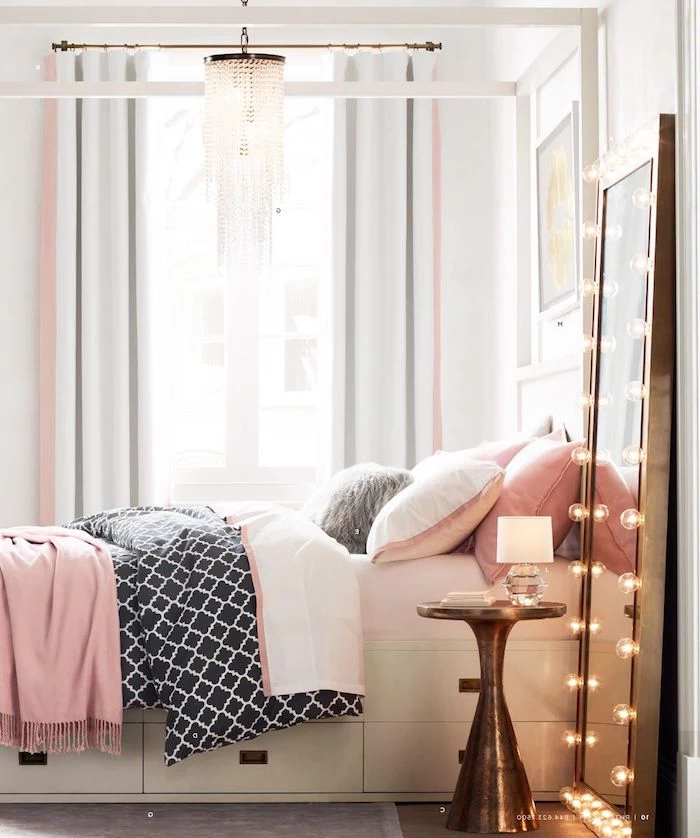
- The Basics: Wall lengths and ceiling height. Standard ceilings are 8 feet, but it’s always good to check.
- Doors and Windows: Measure their size and how far they are from the corners. A key detail: note which way the door swings open. That swing can eat up a surprising amount of usable space.
- The Annoying Stuff: Mark where all the radiators, vents, and electrical outlets are. You can’t put a bookcase in front of a heat vent or a desk on a wall with no power outlets.
Once you have these numbers, you can sketch a simple floor plan on graph paper. This little map is your secret weapon for testing layouts without breaking your back moving furniture around.
A Quick Lesson on Light
Okay, here’s a pro tip that makes a huge difference. Every paint color has something called a Light Reflectance Value, or LRV, on a scale from 0 (black) to 100 (pure white). It literally tells you how much light a color will bounce around the room.
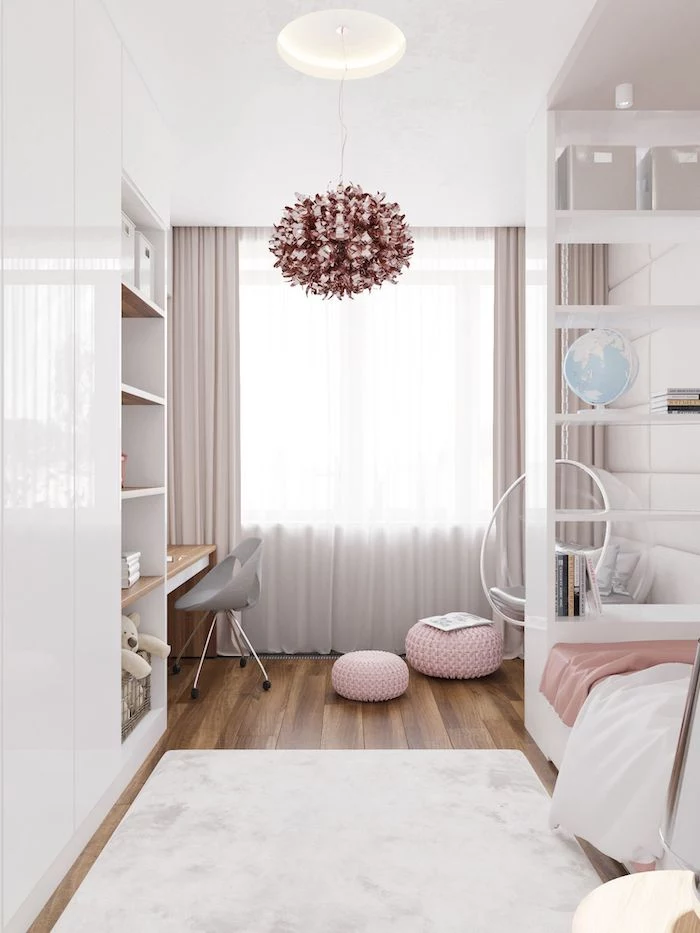
For small rooms, especially those with tiny windows, you want to stick with paints that have an LRV of 60 or higher. Think soft greys, warm off-whites, and pale, airy colors. They work wonders to make a space feel bigger. If your teen is dead-set on a dark, moody color, suggest an accent wall. Painting one wall a deep navy or forest green adds that personal punch without making the entire room feel like a cave.
Good to know: You can usually find the LRV on the back of the paint chip at the store or on the manufacturer’s website. For instance, a super popular color like Sherwin-Williams’ ‘Sea Salt’ has an LRV of 63, which is a fantastic choice. A gallon of quality paint will run you between $40 and $70, and it’s worth every penny for the durability.
The Zoning Strategy: A Room with a Purpose
A teen’s room has to wear a lot of hats. It’s an office, a lounge, and a bedroom. Creating distinct “zones” for these activities brings a sense of order and makes the room feel much larger and more organized. Imagine the ‘before’: a 10×10 room with a bed awkwardly floating in the middle. Now, picture the ‘after’: that same room, but with the bed smartly tucked in a corner, a slim desk under the window, and a tall dresser, creating clear pathways and a place for everything.
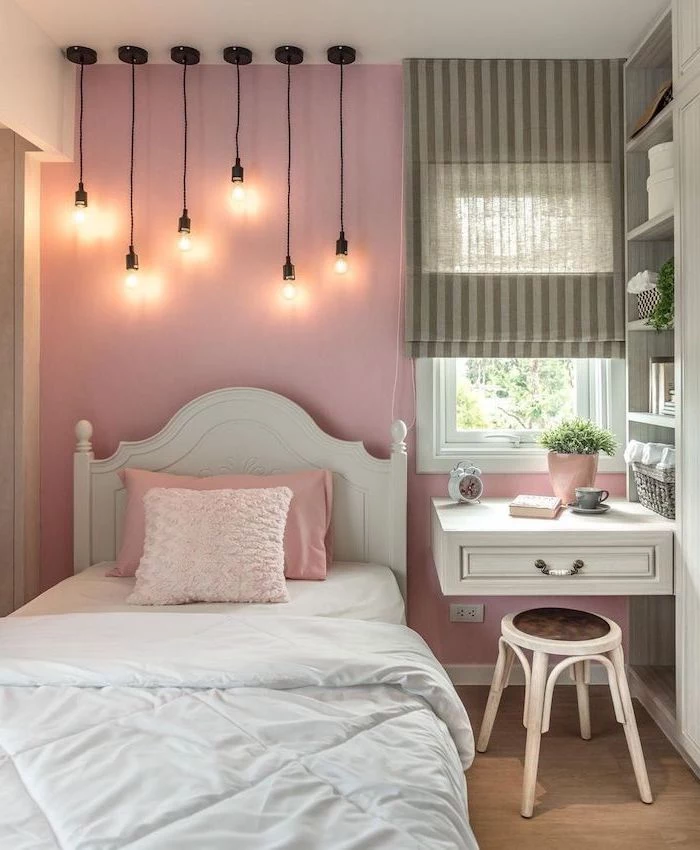
The Sleep Zone
The bed is the biggest thing in the room, so where it goes is a huge decision. A Twin (38″ x 75″) or a Twin XL (38″ x 80″—great for taller teens) is usually the most practical choice. A Full bed can work, but that extra 16 inches of width is a big deal in a small footprint. Map it out on your floor plan first, ensuring you have at least 24-30 inches of clear walking space.
One of the best investments you can make is a storage bed. A standard twin frame might only be $150, but expect to pay around $350 or more for a good one with built-in drawers or a hydraulic lift. The upside? You’re saving the cost (and floor space) of a whole separate dresser.
The Study Zone
A dedicated spot for homework is non-negotiable. For very tight spaces, a floating desk is a game-changer. It’s basically a sturdy shelf mounted to the wall, which frees up floor space and makes the room feel way bigger.
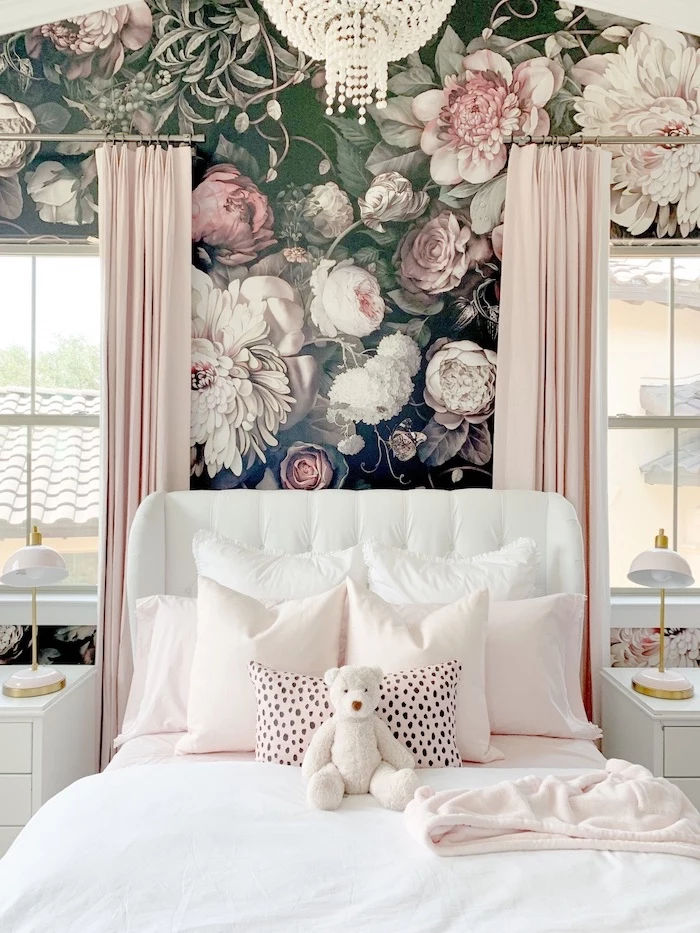
Quick Tip: A DIY floating desk is a weekend project that can cost under $100. Just use a stud finder to locate the wall studs, mark your height (desks are usually 29-30 inches high), secure some heavy-duty brackets from a place like Home Depot into the studs, and then attach your desktop. Easy.
And please, don’t forget task lighting! An overhead light just creates shadows. A simple LED desk lamp with an adjustable arm is a must. Look for one with a cooler light (around 4000K) to help with focus.
The Social & Personal Zone
This is for dressing, hanging out, and self-expression. Think vertically for storage. A tall, narrow dresser takes up less floor space than a wide, low one. You can find great options at stores like IKEA. While you’re at it, grab some slim velvet hangers; they save a shocking amount of closet space compared to bulky plastic ones.
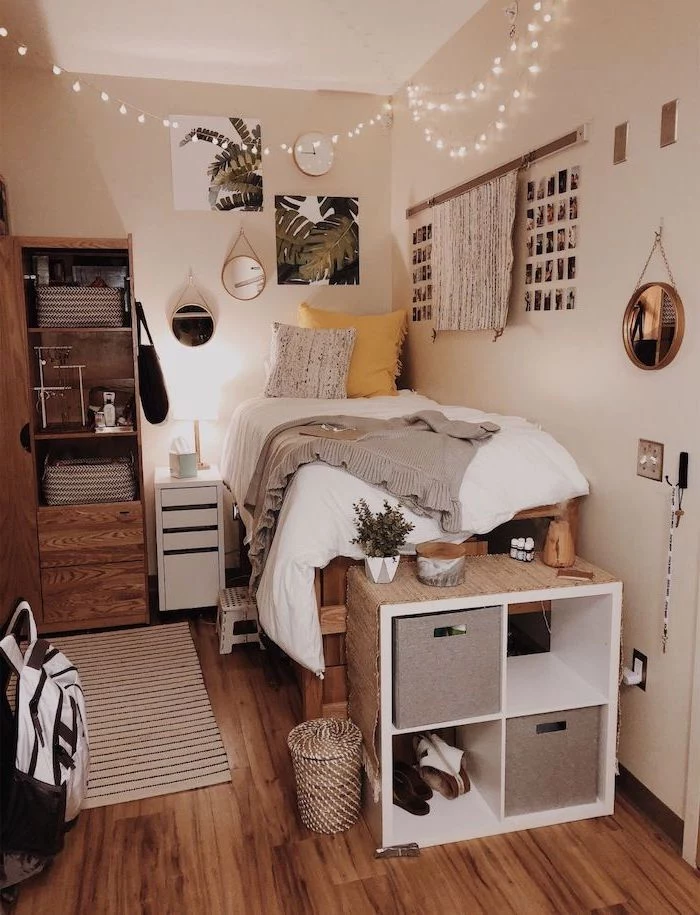
A full-length mirror is a must for most teens, and it’s also a great design trick for making a room feel bigger. To save wall space, mount one on the back of the bedroom door. For extra seating when a friend comes over, a storage ottoman is a perfect two-for-one. It’s a seat and a hidden spot for clutter, and you can find them for between $50 and $100.
Heads Up! The Safety Stuff No One Talks About
This is important, so don’t skip it. A cool-looking room is great, but a safe room is essential. Here are a few things to check off your list.
- Anchor It Down: Tall furniture like bookcases and dressers are serious tipping hazards. They absolutely must be anchored to the wall. Most new furniture comes with an anti-tip kit, but if not, you can buy one for a few dollars. It’s a simple fix that can prevent a serious accident.
- Master the Cords: With phones, laptops, lamps, and LED strips, cords can quickly become a tangled, tripping mess. Invest in a simple cable management box or use adhesive clips to run cords neatly along the baseboard or behind furniture.
- Respect the Limits: If you install floating shelves or a wall-mounted desk, pay attention to the weight rating on the brackets you buy. Don’t let them get overloaded with heavy books or equipment.

A Quick Win for a Busy Weekend
Feeling overwhelmed? Here’s something you can do right now that makes an immediate impact. Swap out the single, dim lightbulb in the ceiling fixture for a brighter, daylight-toned LED bulb. Then, add a $20 desk lamp with a warm-toned bulb. This one-two punch of better ambient and task lighting will instantly make the room feel more spacious and usable.
Tying It All Together
So, there you have it. Creating a fantastic bedroom for your teen isn’t about magic; it’s about a smart plan. It starts with a conversation, moves to a solid layout, and focuses on creating zones that serve a real purpose. By mixing in smart storage, layered lighting, and a dose of your teen’s personality, you can create a space that feels like a true sanctuary—a room that works for them and gives you peace of mind. You’ve got this.
Inspirational Gallery
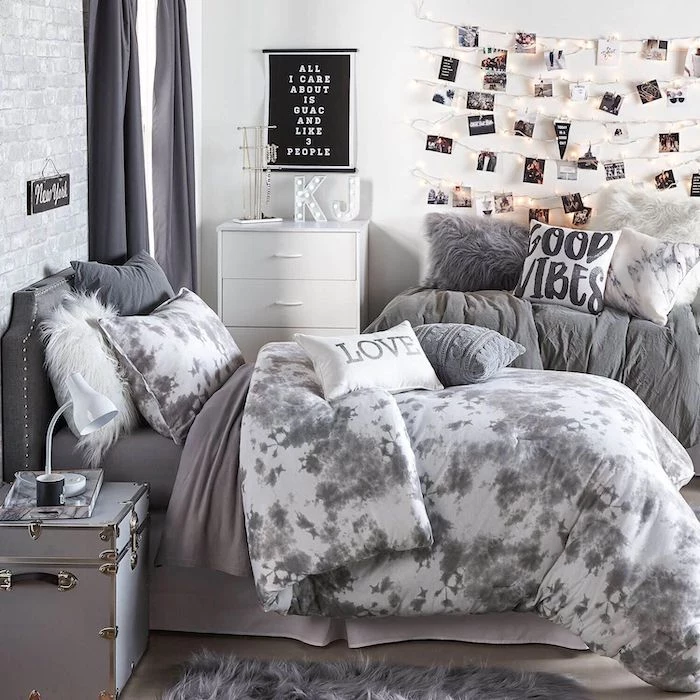
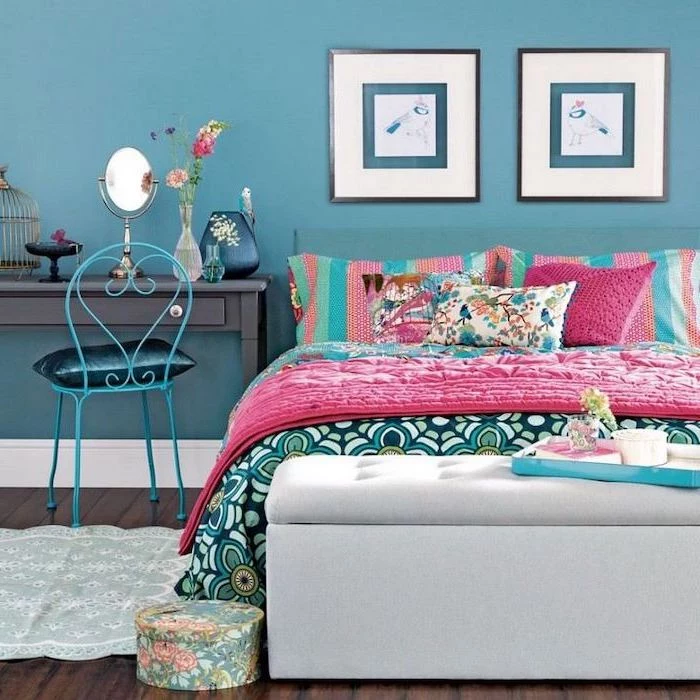
A loft bed isn’t just for kids. For a teen in a small room, it’s a game-changer. By lifting the sleep zone, you instantly create a full-size space underneath for a desk, a gaming setup, or a comfy reading nook with a beanbag. Look for sturdy metal or solid wood models like IKEA’s STUVA or Tuffing, which offer a clean, minimalist frame that doesn’t feel bulky.
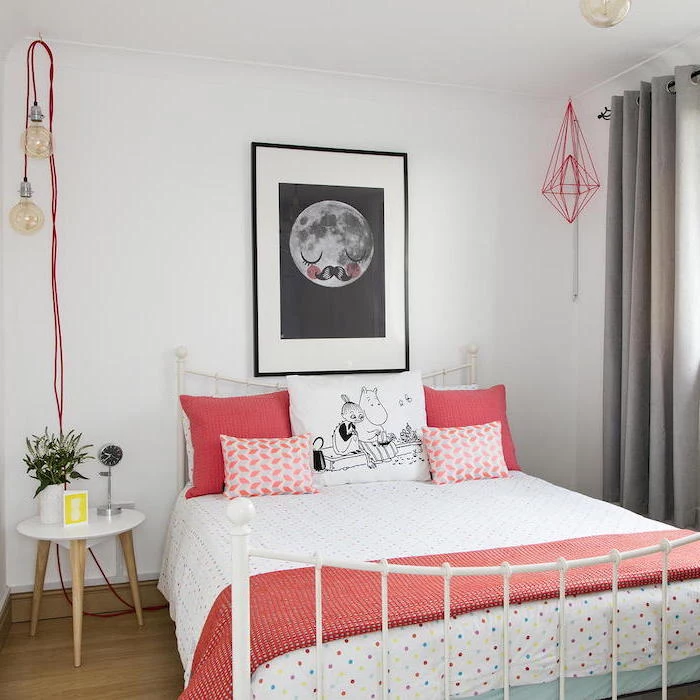
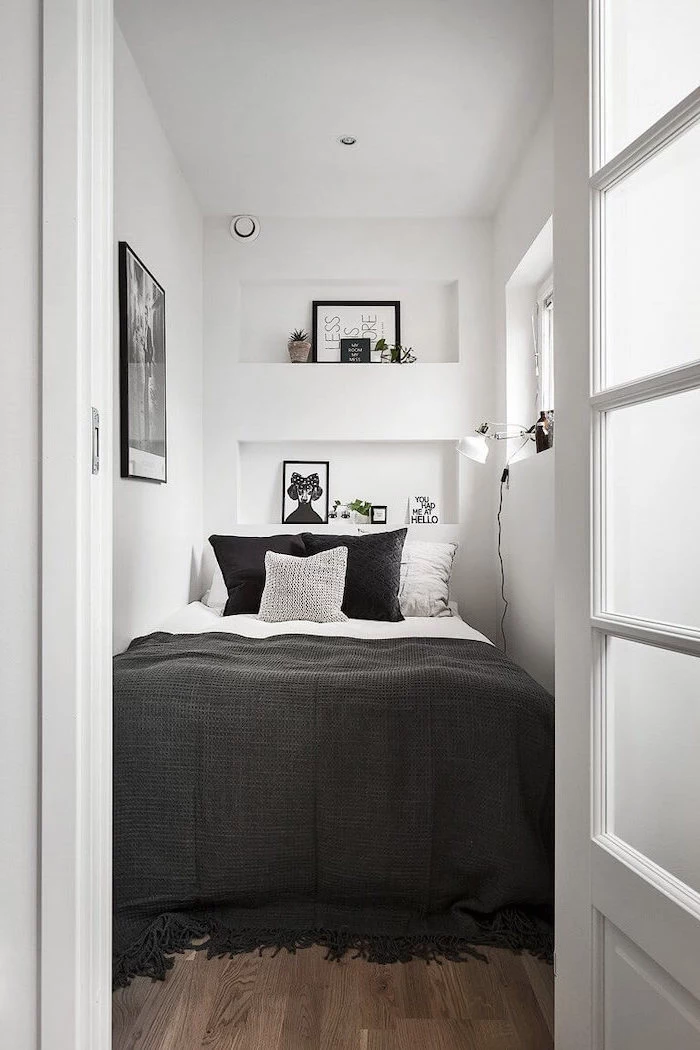
- Utilize the space under the bed with low-profile rolling drawers for shoes or extra linens.
- Think vertically with over-the-door organizers for accessories, not just inside the closet but on the main door too.
- A slim, rolling cart, like IKEA’s RÅSKOG, can be a mobile station for art supplies, makeup, or snacks.
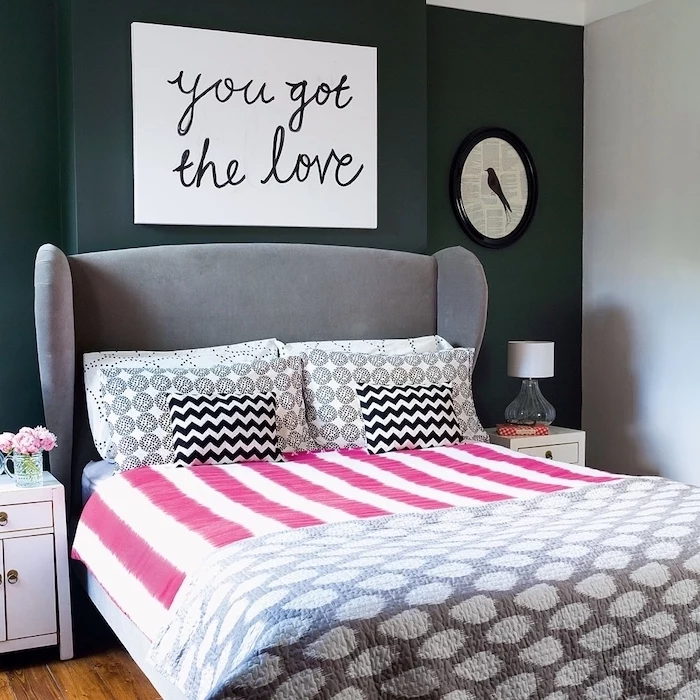
The oldest trick in the book works for a reason: A large, well-placed mirror can visually double the size of the room. Position a full-length leaning mirror opposite a window to maximize natural light and create an illusion of depth. It’s functional for getting ready and a powerful design tool in one.
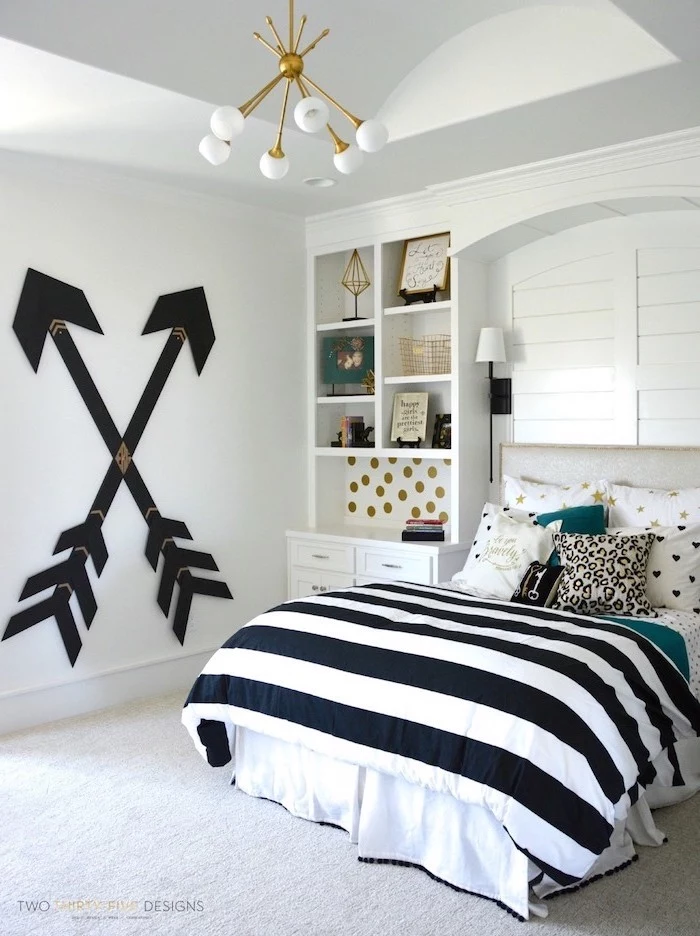
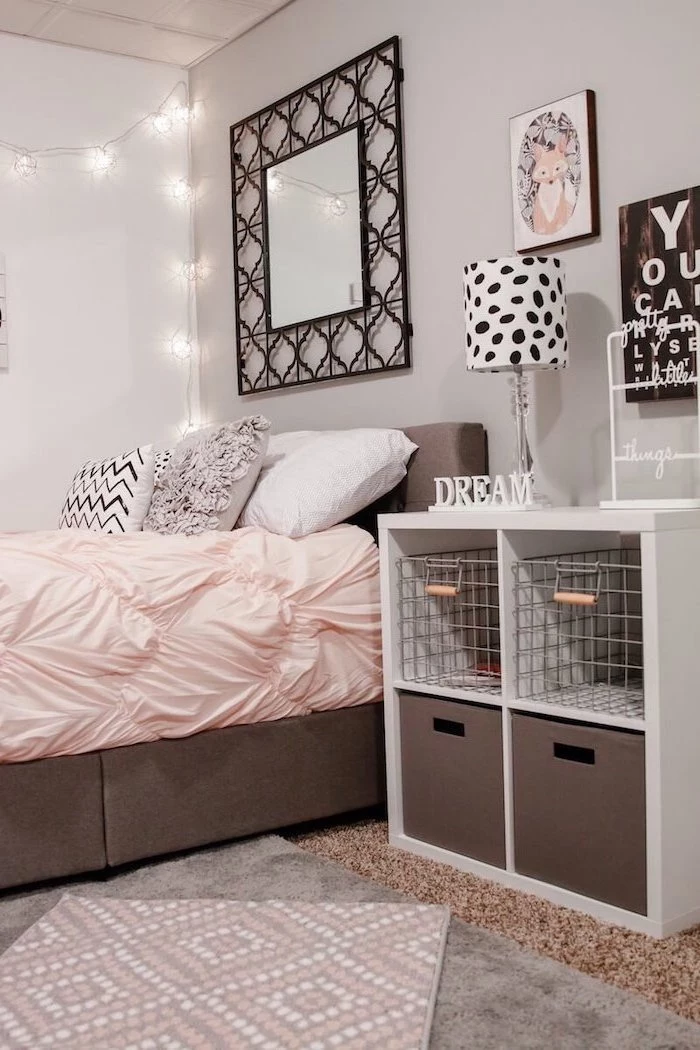
Color psychology studies suggest that blues and greens can create a sense of calm and focus, making them ideal for a study area.
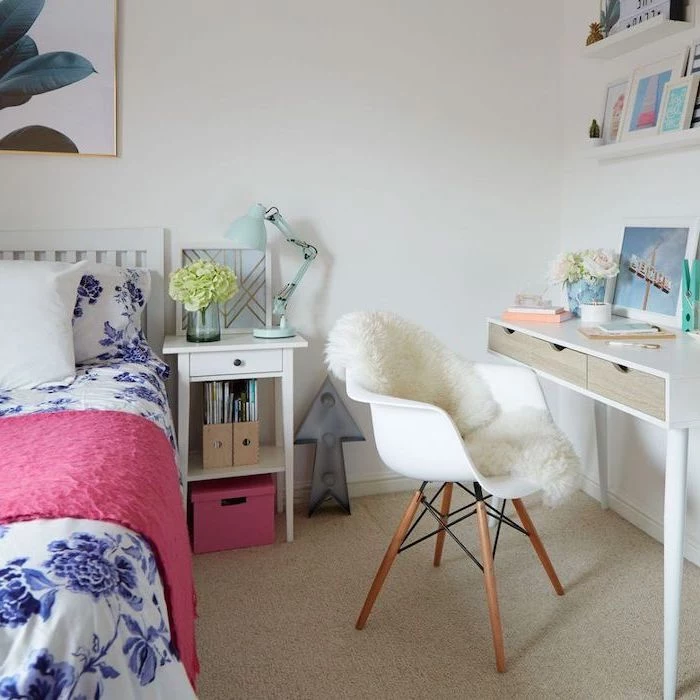
One overhead light is never enough. A successful teen room uses layered lighting to create different moods:
- Ambient: A main ceiling fixture or flush mount.
- Task: A focused desk lamp for homework (the Pixar-style lamp is a timeless choice).
- Accent: LED strip lights behind a headboard, fairy lights, or a cool neon sign for personality.
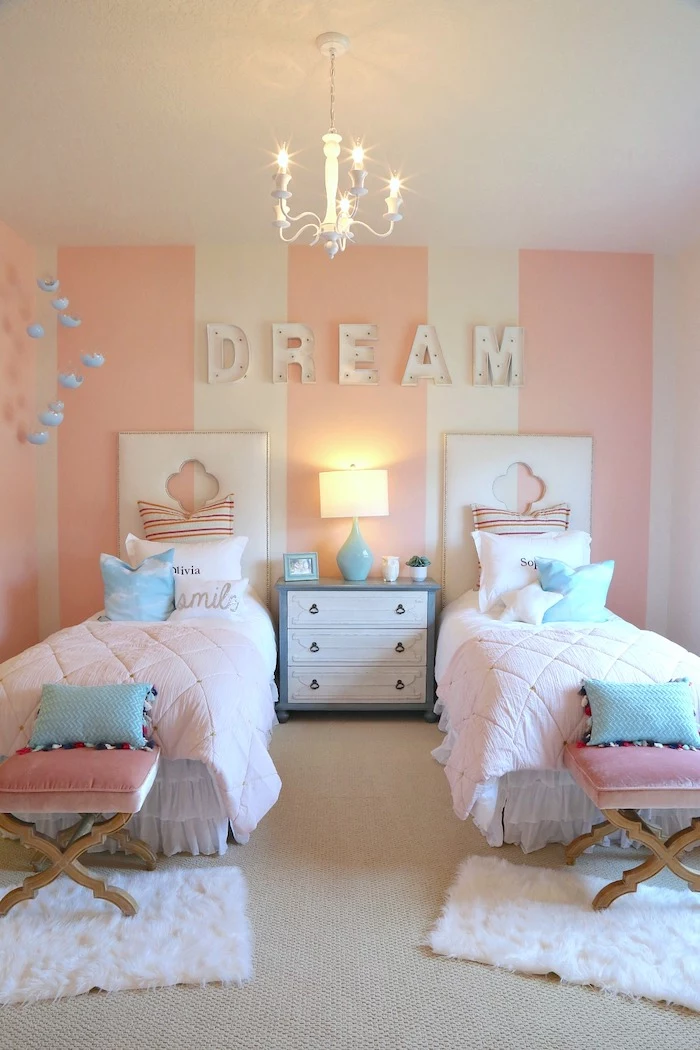
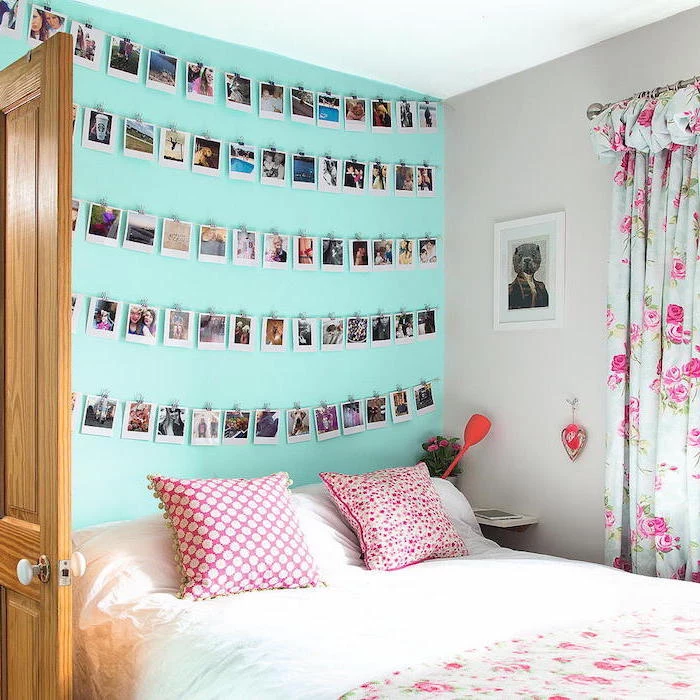
My teen is demanding black walls. How do I prevent the room from feeling like a cave?
Embrace the drama, but with a strategy. Suggest a single accent wall behind the bed, perhaps using a textured black wallpaper from a brand like Graham & Brown for added interest. Keep the other three walls and the ceiling a crisp white. This creates a bold focal point without shrinking the space. Then, layer in bright textiles, metallic accents, and lots of warm lighting to balance the darkness.
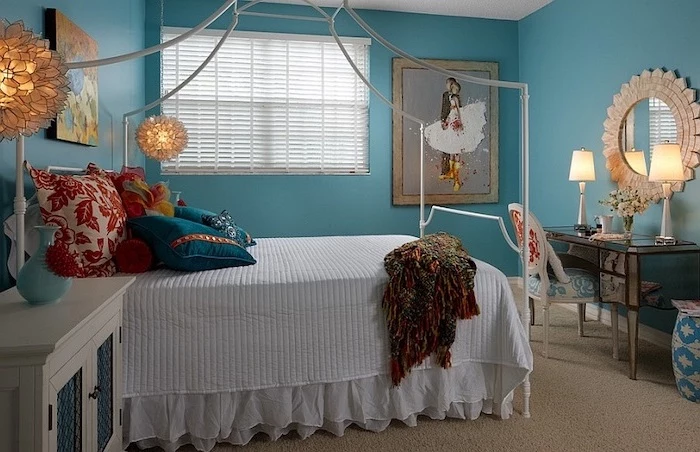
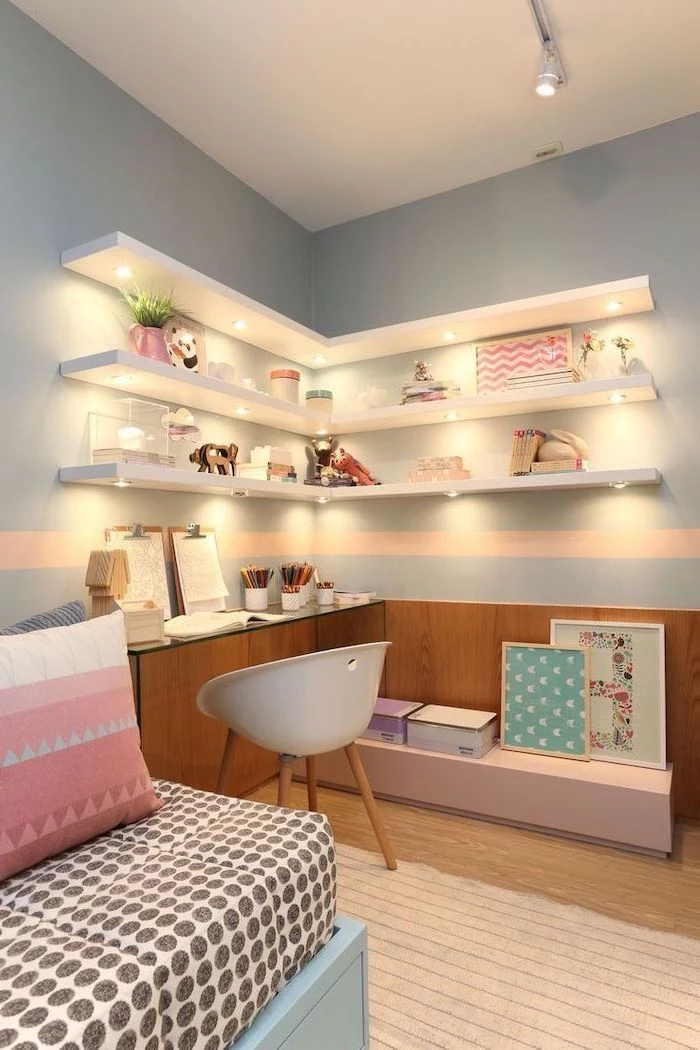
A Proper Desk: Prioritizes a large, clear surface for schoolwork and a laptop. Best for the studious teen who needs focus and organization.
A Chic Vanity: Focuses on mirror space, good lighting, and storage for makeup and hair tools. Best for the teen whose room is more of a getting-ready social hub.
For a small room, consider a hybrid ‘vanity desk’ with a flip-up mirror to get the best of both worlds.
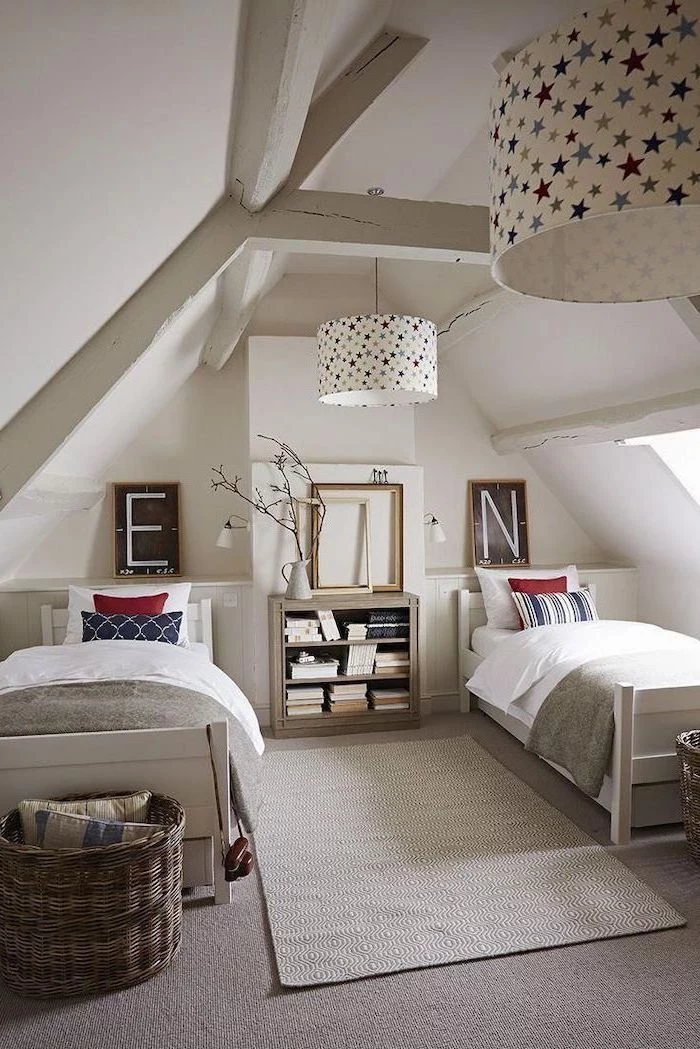
Fact: The average band poster is 24×36 inches, an awkward size for which affordable frames are surprisingly hard to find.
Instead of wrestling with expensive custom framing or using sticky tack that damages walls, create a modern, informal gallery. Use magnetic poster hangers made of wood or sleek black clips hung from a wire. This makes it easy for your teen to swap out posters as their tastes change, damage-free.
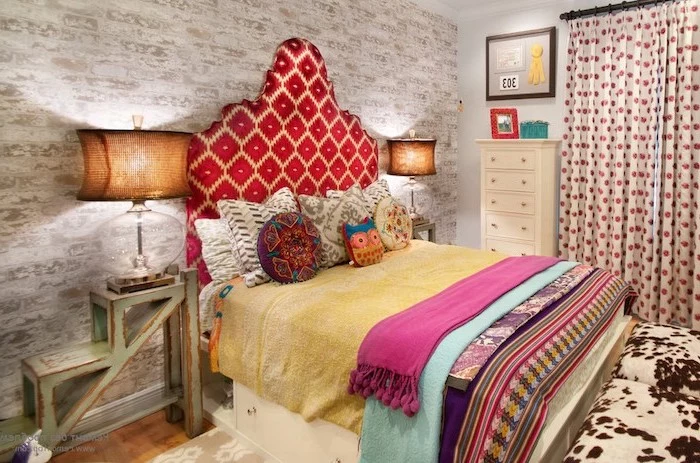

- It creates a dedicated zone for decompressing away from the desk.
- It adds texture and softness to the room’s overall design.
- It provides extra seating when friends come over.
The secret? A super-comfy floor cushion or a low-slung papasan chair. Look at brands like Urban Outfitters or World Market for stylish, teen-approved options that feel like a private retreat.
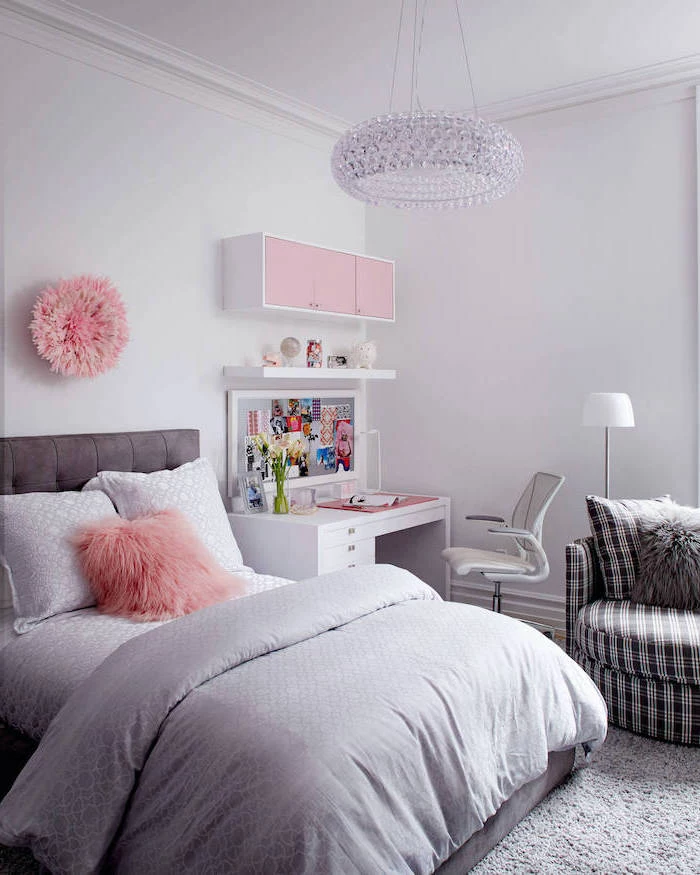
Nothing ruins a cool room faster than a Medusa-like tangle of charging cables. A dedicated tech zone is essential. A simple pegboard system, like the IKEA SKÅDIS, can hold phones, controllers, and headphones neatly. Combine it with a power strip hidden in a cable management box for a clean, functional, and fire-safe setup.
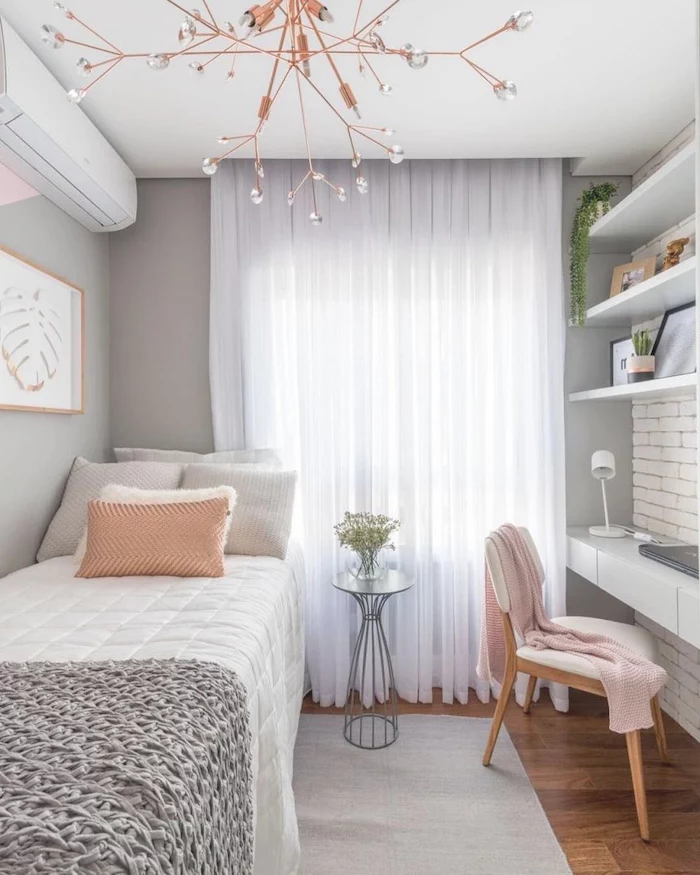

Go beyond paint with these easy, high-impact wall treatments:
- Peel-and-Stick Wallpaper: Brands like Chasing Paper or Tempaper offer thousands of removable designs, from subtle geometrics to bold florals. Perfect for an accent wall.
- Vinyl Decals: Add a favorite quote, a world map, or a cluster of stars without any commitment.
- Washi Tape: Create crisp, graphic lines or geometric shapes for a super affordable, totally custom, and easily removable look.
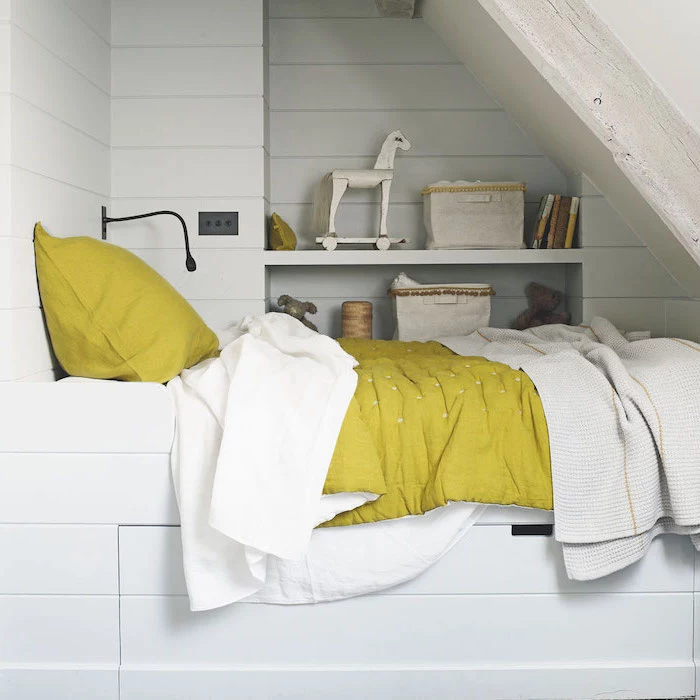
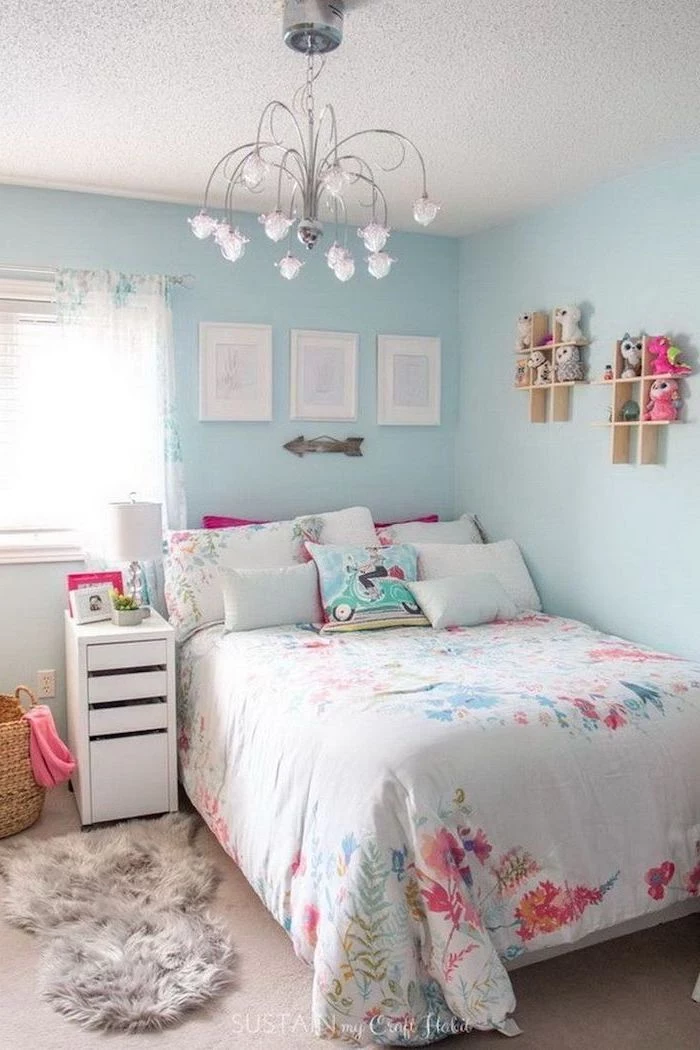
Don’t skip the rug: Even in a carpeted room, an area rug is a must. It anchors the furniture, defines the primary living space, and adds a major dose of color and texture. A 5×7 or 6×9 rug is usually the perfect size for a small bedroom, creating a ‘zone’ around the bed.
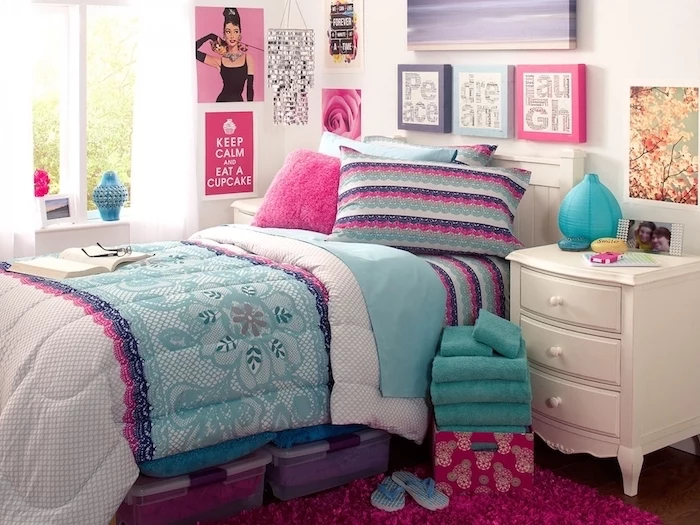
According to the EPA, furniture is the least-recycled item in household waste. Upcycling just one piece, like a dresser or nightstand, keeps it out of the landfill and adds a unique, personal touch to the room.
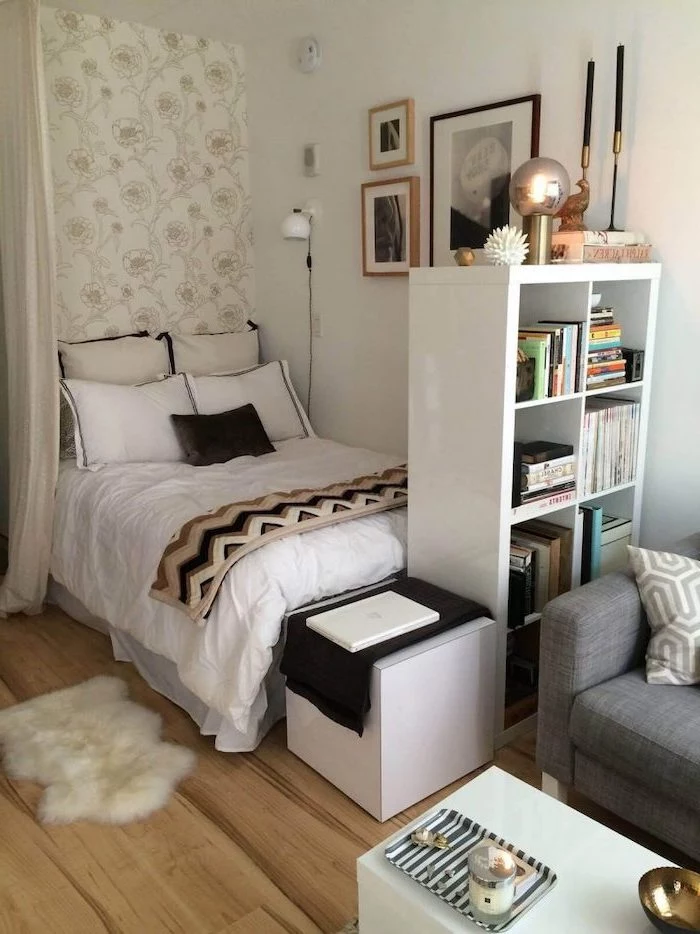
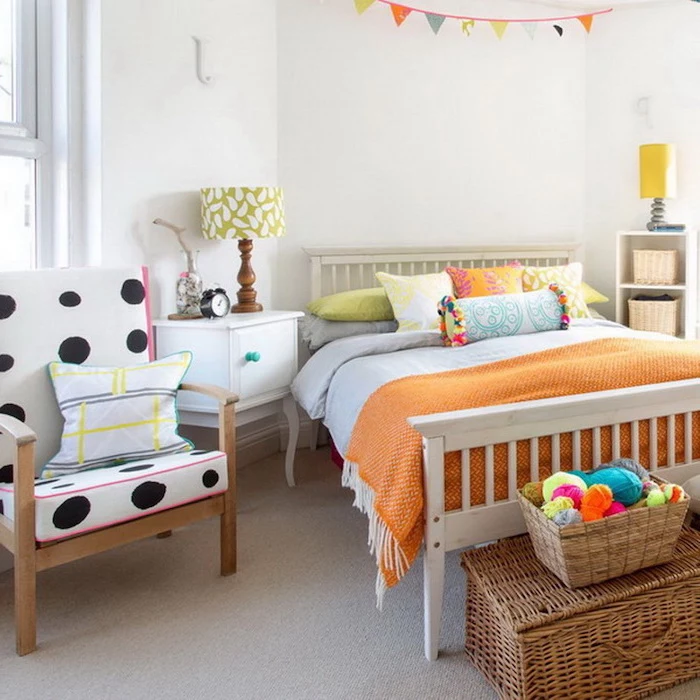
The bed is the biggest piece of furniture, so the bedding makes the biggest statement. When choosing, think about:
- Feel: A soft, breathable cotton percale or jersey knit will be comfortable year-round.
- Personality: Let them choose. Brands like Dormify and Pottery Barn Teen specialize in patterns and colors that teens actually like.
- Practicality: Have at least two duvet covers so one can be in the wash. Darker colors or busy patterns are more forgiving of stains.
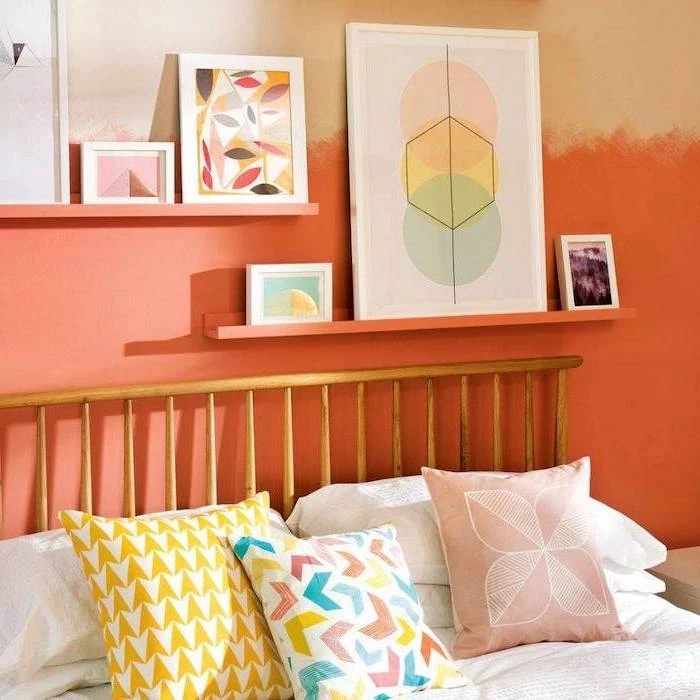
How can we make the room *smell* better without using overpowering sprays?
A room’s atmosphere is also about scent. A subtle reed diffuser with a fresh scent like cotton or citrus can keep things from getting stale. For a more active choice, a small essential oil diffuser (check out brands like Vitruvi or Muji) allows your teen to customize the scent to their mood—lavender for calm, or peppermint for focus during study sessions.
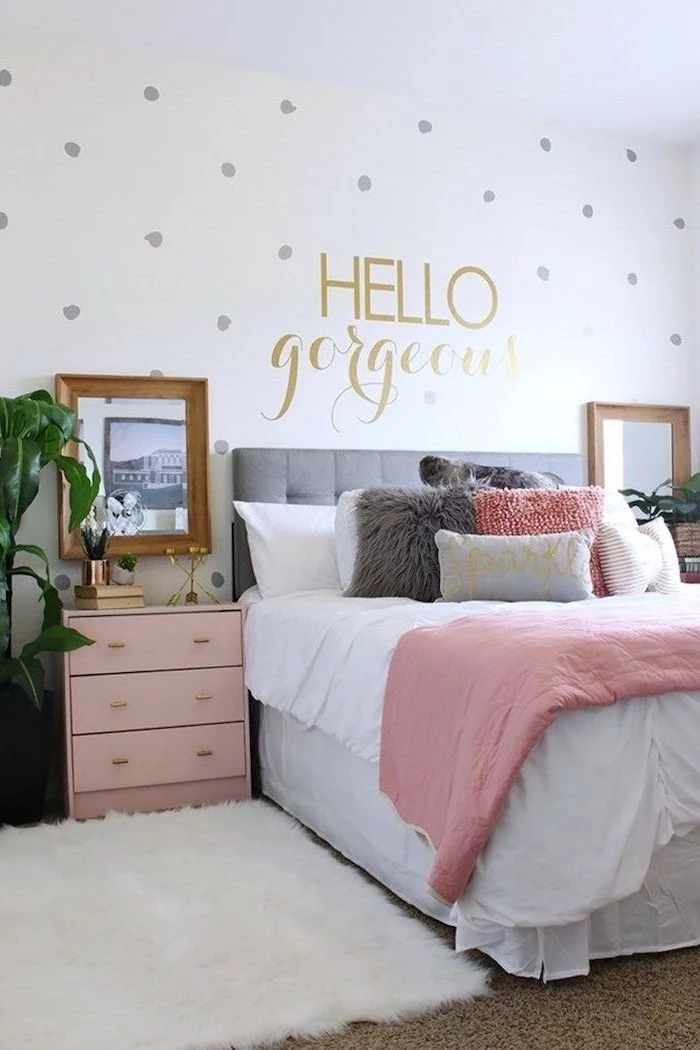

LED Strip Lights: Affordable and versatile. They are best for ambient backlighting behind a desk or headboard, or for outlining the room’s perimeter. The color-changing options are a huge plus for teens who like to customize their vibe.
Custom Neon Signs: More of a statement art piece. They provide a focused, warm glow and are perfect for displaying a name, a favorite word, or a cool symbol above the bed.
For a modern look, use both—LED strips for mood and a neon sign as the focal point.
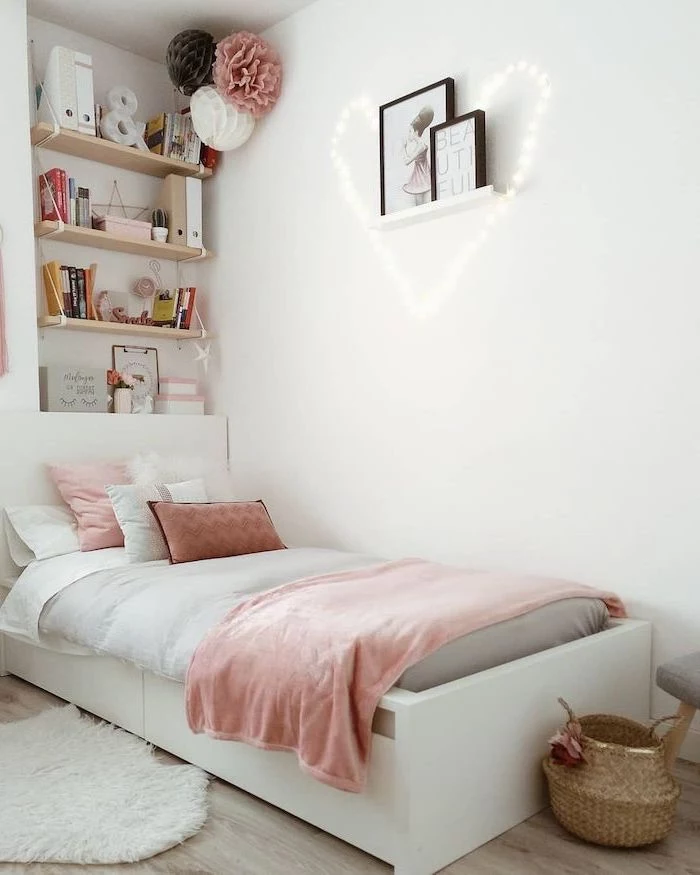
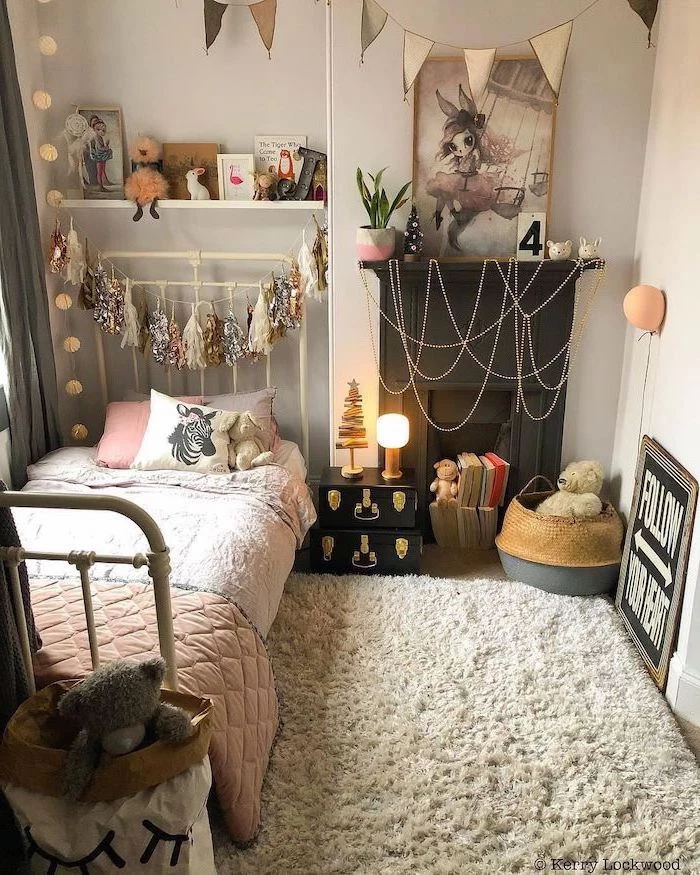
The average 10×10 foot room has over 320 square feet of wall space, but most of it goes unused.
This is your secret weapon against clutter. Install rows of slim, floating shelves (like the classic IKEA LACK) above the desk or dresser to display books, plants, and favorite objects. This draws the eye upward, making the room feel taller, and keeps surfaces clear.
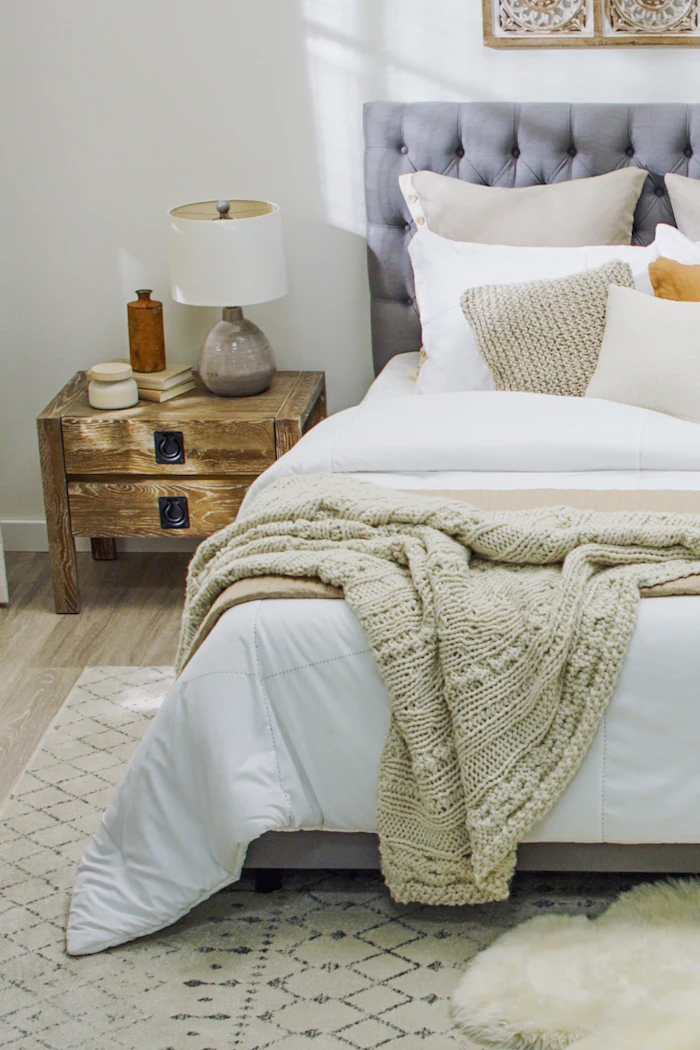
- It easily accommodates friends for movie nights or gaming sessions.
- It can be tucked away when not in use, freeing up valuable floor space.
- It adds a relaxed, casual vibe that teens love.
The secret? Flexible seating. Think plush floor pillows, a storage ottoman that doubles as a seat, or a couple of stylish poufs that can be moved around as needed.
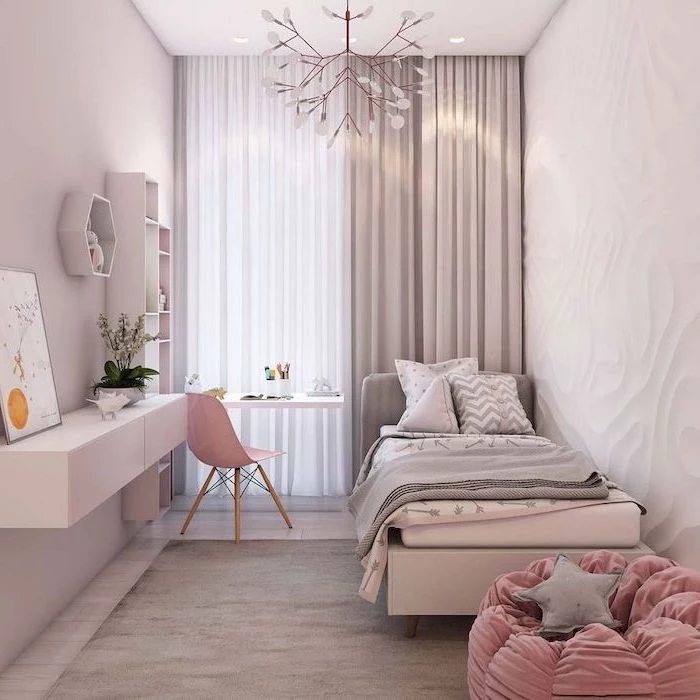
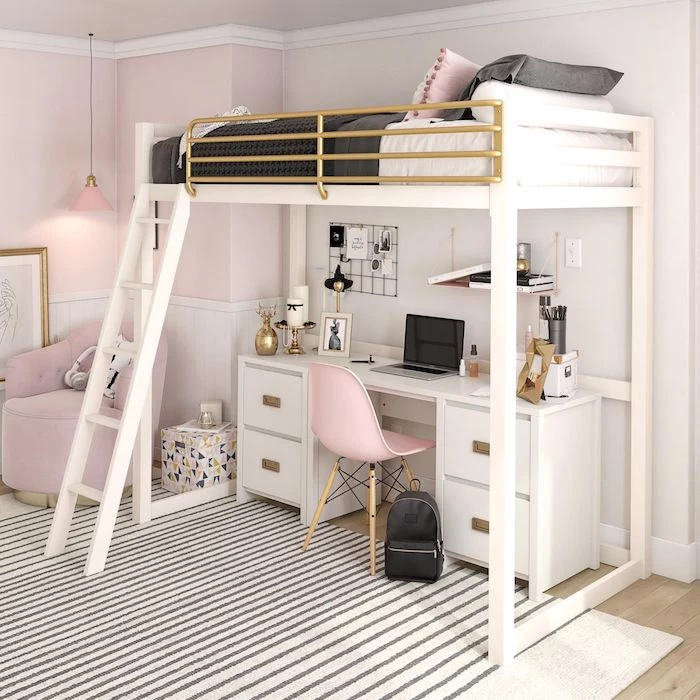
To create a sophisticated gamer room, think beyond the clichés. Start with a neutral base like gray or navy walls. The key is lighting: use smart RGB light panels from Nanoleaf or Govee to create dynamic, colorful scenes. Prioritize cable management and a high-quality headset stand to keep the desk pristine. The tech itself becomes the decor.

- Buying a matching furniture ‘set’: It often feels dated and lacks personality. Mix and match pieces for a more curated look.
- Ignoring the window: Bare windows feel unfinished. Simple blinds for privacy and curtains for softness and color will complete the room.
- Forgetting texture: A room with all flat surfaces feels sterile. Add a shaggy rug, a velvet pillow, or a chunky knit blanket to make it cozy.
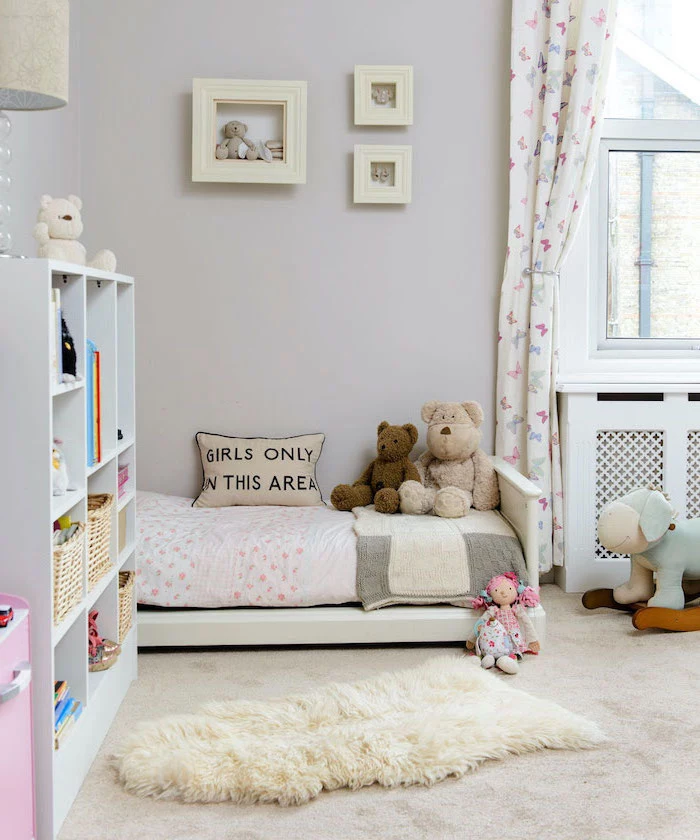
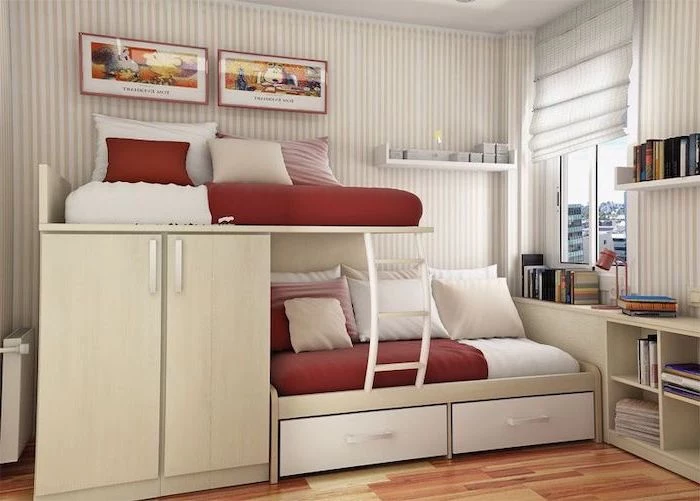
The one non-negotiable for modern teen life: A centralized, out-of-the-way charging station. Dedicate one spot, perhaps on a small shelf or the corner of the desk, with a multi-port USB charger. This stops cables from taking over every available outlet and creates a ‘home’ for devices so they’re less likely to get lost in the bedding.
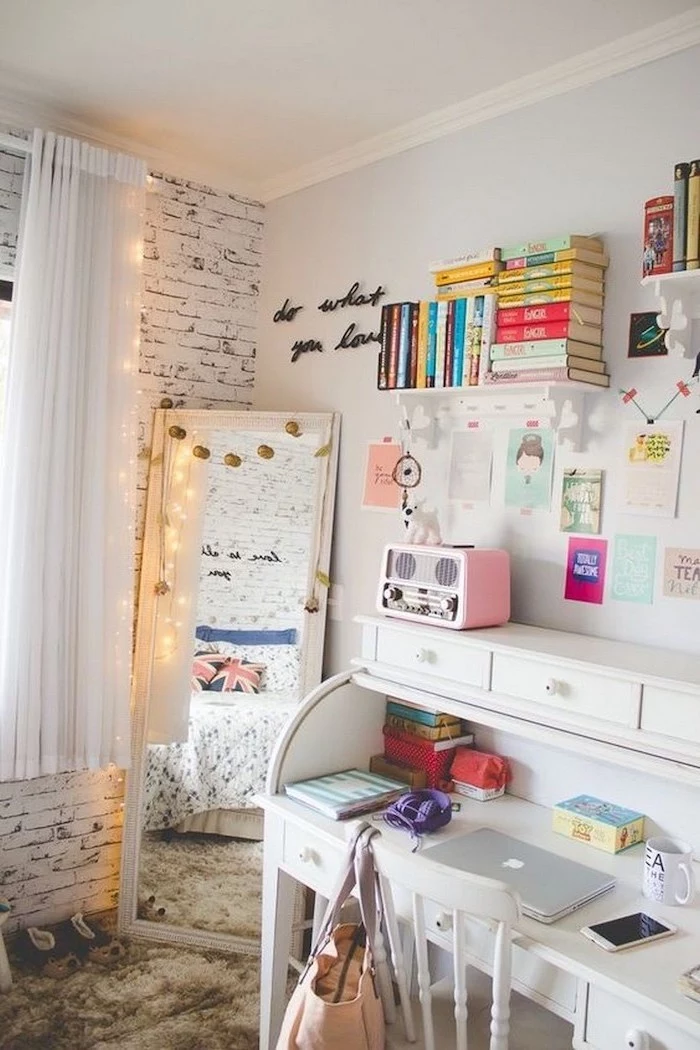
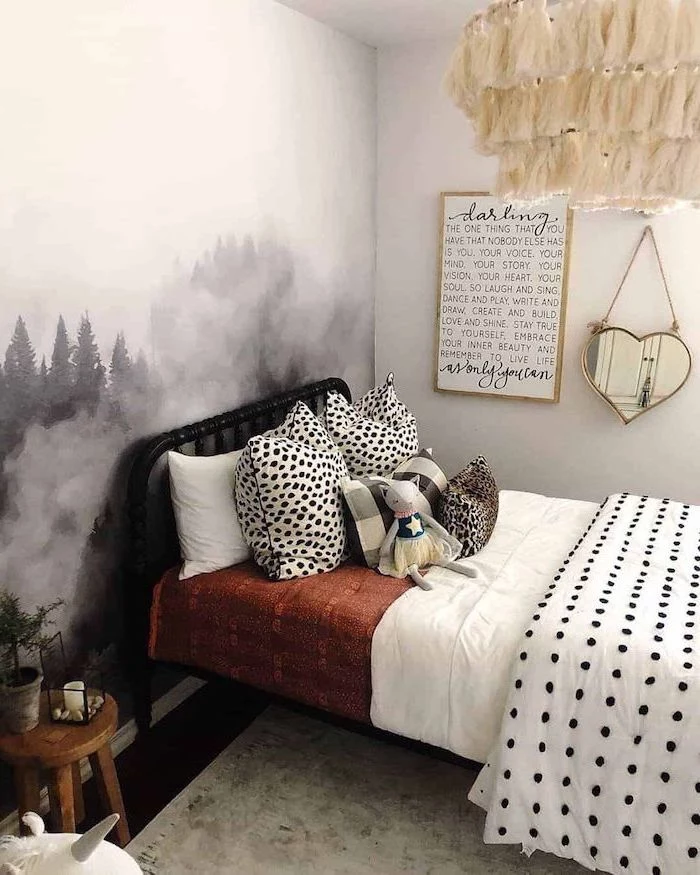
“The things you love are what make a house a home.” – Famed decorator Bunny Williams
This is doubly true for a teenager’s room. Encourage them to display their passions. Use clear acrylic risers for a sneaker collection, small floating shelves for Funko Pops, or a beautiful corkboard for ticket stubs and photos. These aren’t clutter; they’re the story of who they are.

A touch of green can make a stuffy room feel fresh and alive. Even if your teen isn’t a natural gardener, some plants are nearly impossible to kill.
- Snake Plant (Sansevieria): Thrives on neglect and is an excellent air purifier.
- Pothos: A trailing vine that looks great on a high shelf or in a hanging planter, freeing up surface space.
- ZZ Plant: Tolerates very low light, making it perfect for a darker corner.
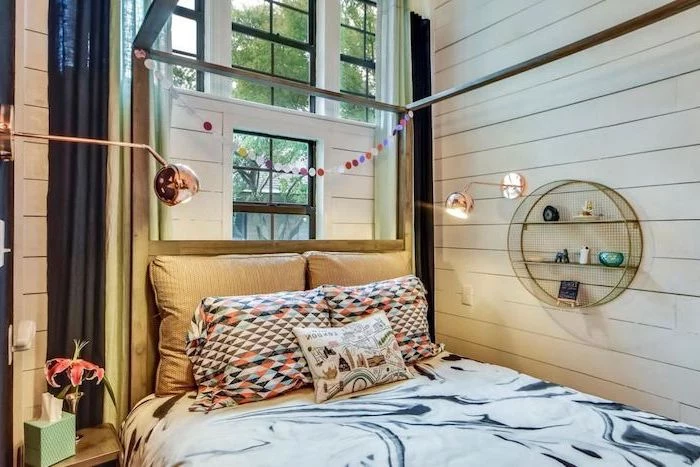
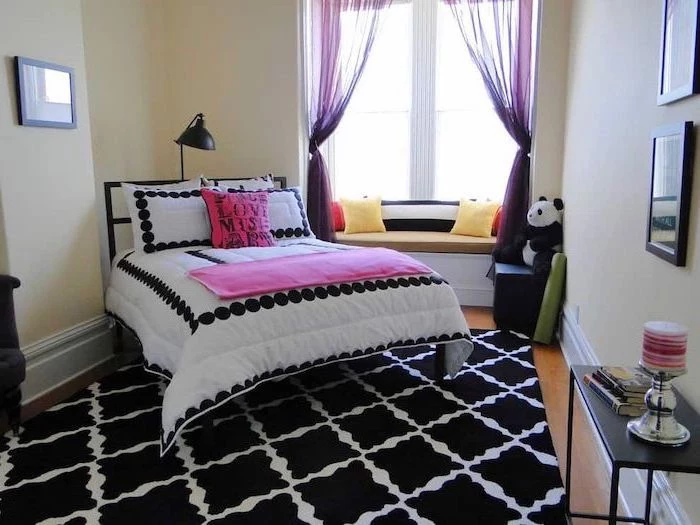
My teen has a huge collection of [books/mugs/snow globes]. How can we display it without it looking messy?
The key is to treat it like a museum exhibit, not a pile. Dedicate a specific zone, like a set of vertical bookshelves or a few picture ledges. Group items by color or size, and leave some ‘breathing room’ between them. This intentional curation turns a potential mess into a cool, personalized feature wall.
Wall-Mounted Mirror: A great space-saver, but requires drilling. It provides a fixed, clean look that’s perfect above a dresser or on a narrow wall.
Over-the-Door Mirror: The ultimate space-saving solution. It requires zero floor or wall space, making it ideal for the smallest rooms or for hanging on a closet door.
If floor space is at a premium, the over-the-door option is the most practical choice.

